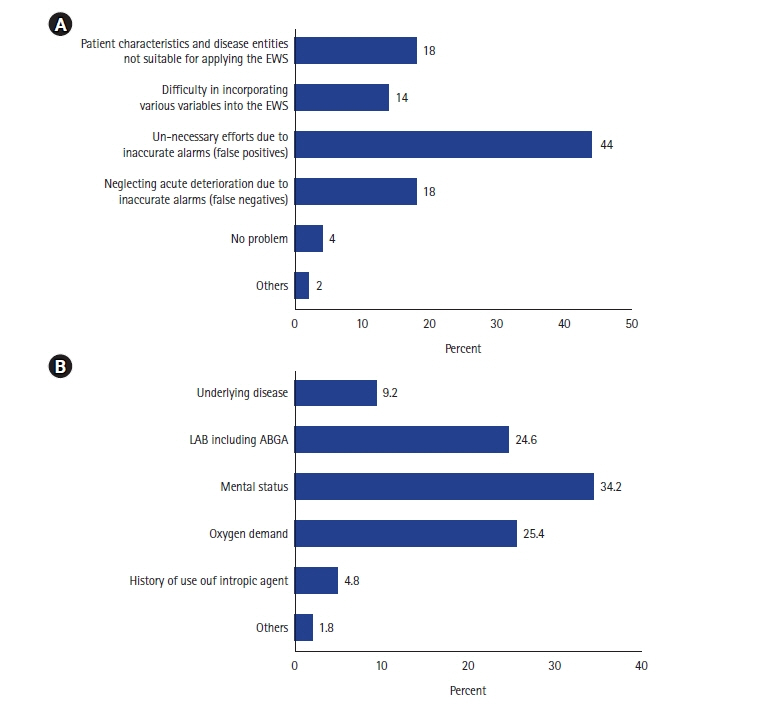Acute Crit Care.
2022 Nov;37(4):687-689. 10.4266/acc.2022.01144.
Current status of the rapid response system and early warning score: a survey-based analysis
- Affiliations
-
- 1Division of Cardiology, Department of Internal Medicine, Seoul National University Hospital, Seoul, Korea
- 2Department of Critical Care Medicine, Seoul National University Hospital, Seoul, Korea
- 3Department of Neurology, Seoul National University Hospital, Seoul, Korea
- 4Division of Pulmonary and Critical Care Medicine, Department of Internal Medicine, Seoul National University Hospital, Seoul, Korea
- KMID: 2540163
- DOI: http://doi.org/10.4266/acc.2022.01144
Figure
Reference
-
1. Jones DA, DeVita MA, Bellomo R. Rapid-response teams. N Engl J Med. 2011; 365:139–46.
Article2. DeVita MA, Smith GB, Adam SK, Adams-Pizarro I, Buist M, Bellomo R, et al. "Identifying the hospitalised patient in crisis": a consensus conference on the afferent limb of rapid response systems. Resuscitation. 2010; 81:375–82.
Article3. Morgan RJ, Williams F, Wright MM. An early warning scoring system for detecting developing critical illness. Clin Intensive Care. 1997; 8:100.
- Full Text Links
- Actions
-
Cited
- CITED
-
- Close
- Share
- Similar articles
-
- Deep Learning in the Medical Domain: Predicting Cardiac Arrest Using Deep Learning
- Using an Early Warning Score for Nurse Shift Patient Handover: Before-and-after Study
- Comparing the effectiveness of early warning scores in predicting adult patient outcomes in the emergency department
- A Survey on the Effect of Cigarette Warning Labels
- Influence of the Rapid Response Team Activation via Screening by Nurses on Unplanned Intensive Care Unit Admissions


